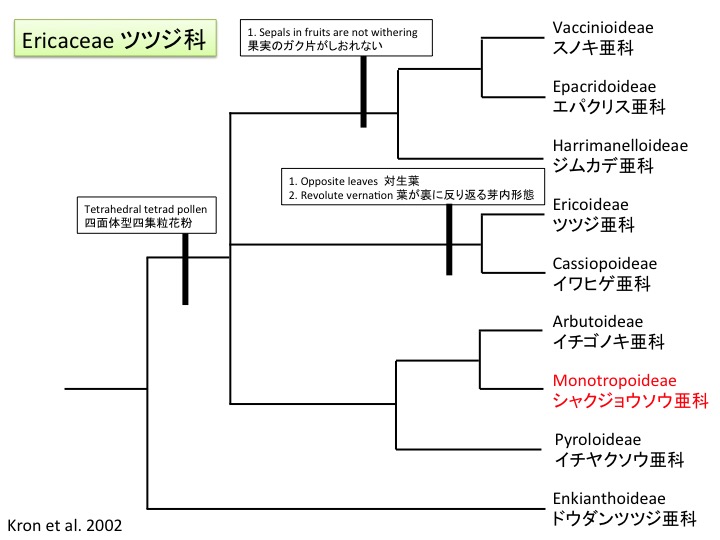Kron, K. A. et al. 2002. Phylogenetic classification of Ericaceae: Molecular and morphological evidence. Bot. Rev. 68: 335-423.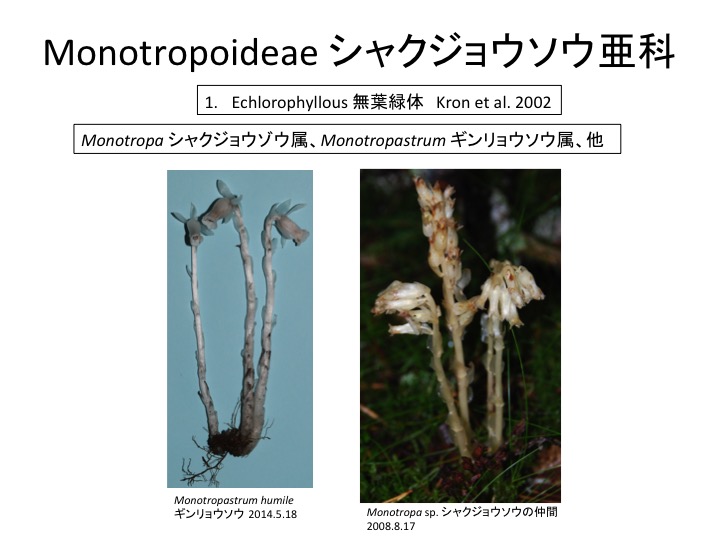
菌従属栄養植物の進化過程はほとんどわかっていない。何が発端で途中過程でどのような変化が起こったのか。近縁の独立栄養植物とのゲノム比較が研究の第一歩かもしれない。
Most land plants are associated with fungi but mycoheterotrophic plants are not popular. Genome comparisons to their sister autotrophic plants may give insight on the evolution.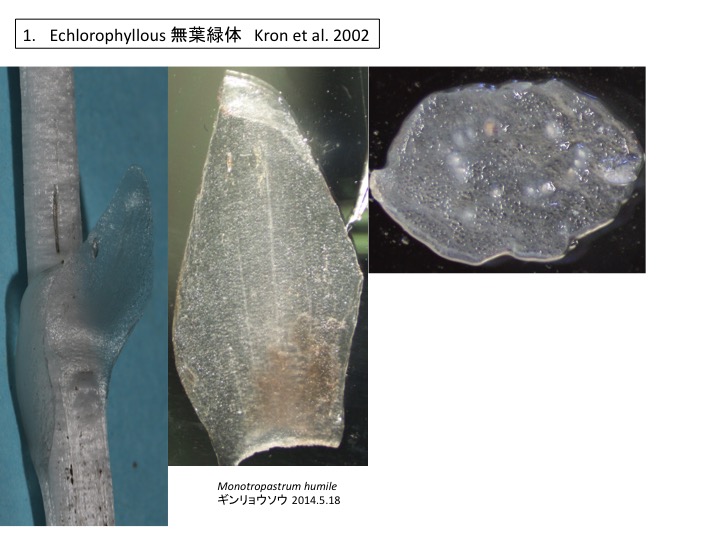
光合成しないのにどうして葉がついているのだろうか。
Why are leaves formed without the function of photosynthesis? What is their function?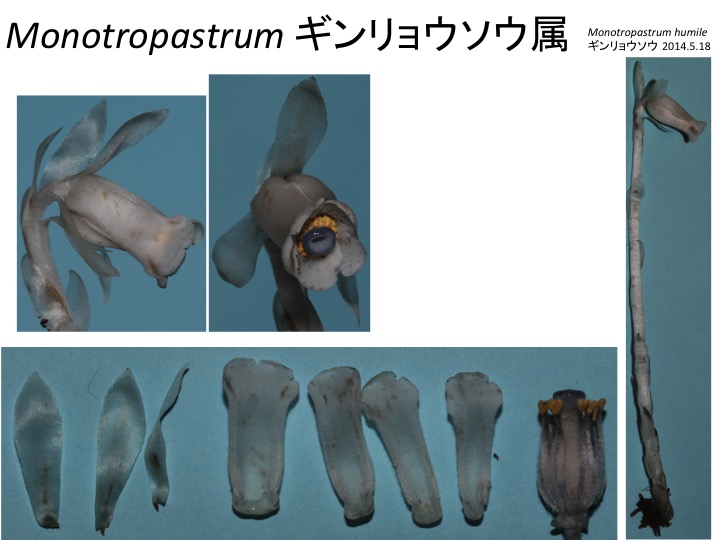
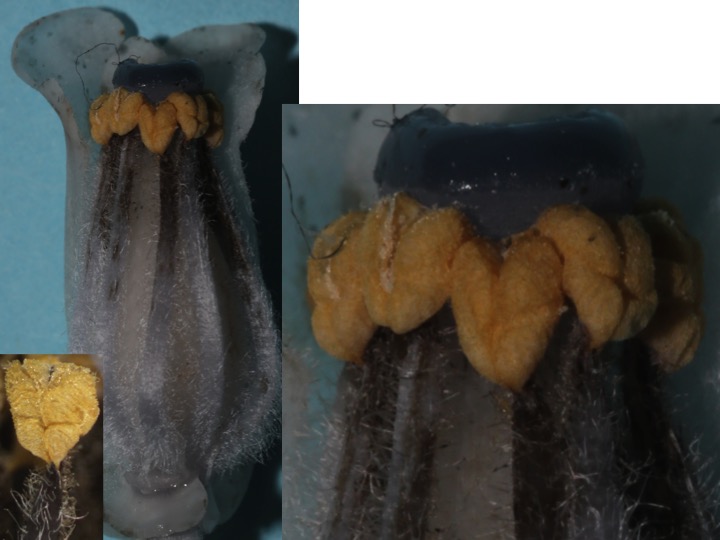
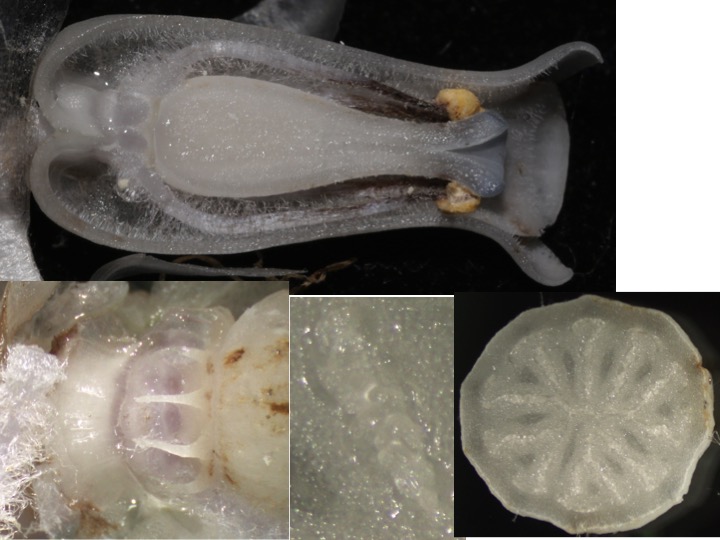
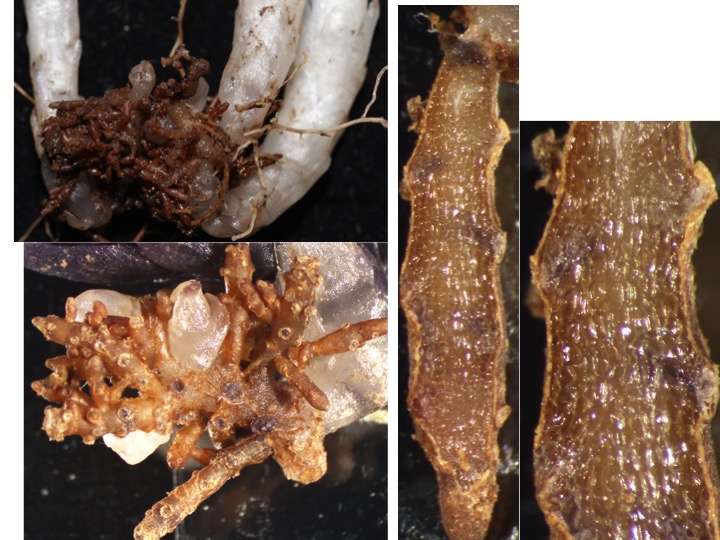
シャクジョウソウ亜科の種は菌従属栄養性で、他の植物と共生している外生菌に寄生し、外生菌から栄養を得ている。モノトロポイド菌根を形成する
Species in the Monotropoideae are mycoheterotrophic plants and are parasitic to ectotrophic fungi symbiotic to other plants. They form monotropoid, mycorrhiza.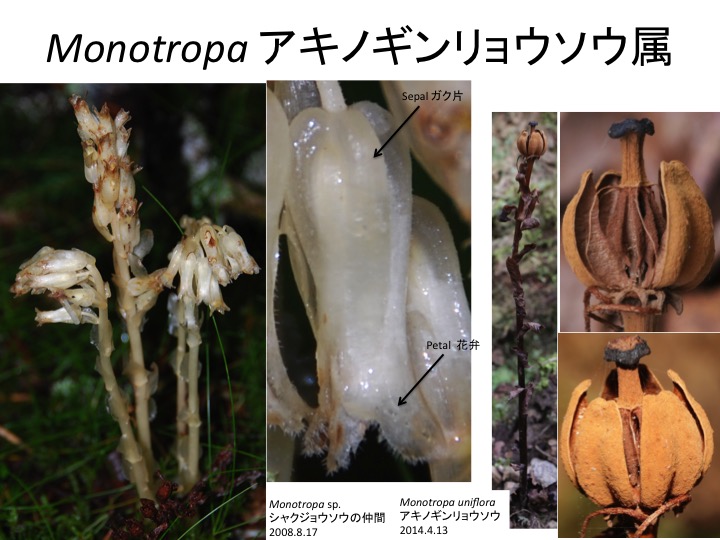
アキノギンリョウソウ属は花弁に毛が生えている、果時にガク片と花弁が残らない、果実が上を向くなどの点でギンリョウソウ属と異なる。
Monotropa is different from Monotropastrum in (1) hairy petals, (2) fruits without petals and sepals, and (3) fruits upright.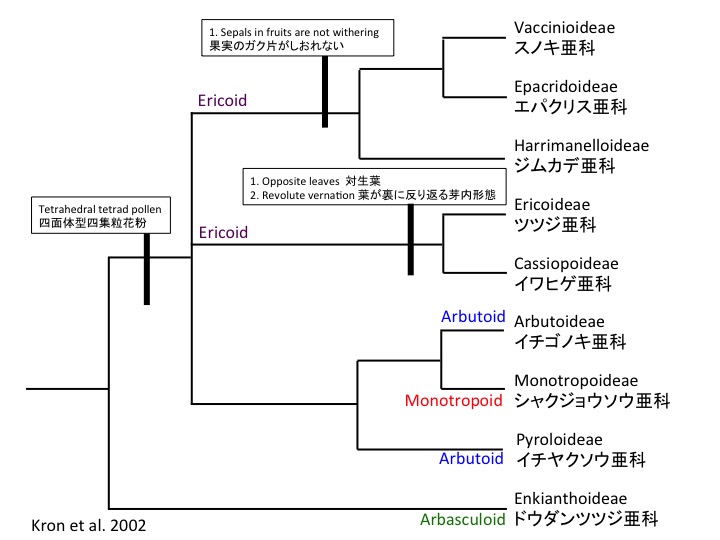
植物と菌類は共生して菌根と呼ばれる共生体(共生組織)を形成する。植物と菌類の組み合わせによって異なった形態や細胞接触の菌根が形成される。ツツジ科ではそのような違いが顕著で、アーバスキュラー菌根、アルブトイド菌根、モノトロポイド菌根、エリコイド菌根を形成する群を含む。
Plants and fungi symbiotically associate and form symbiotic tissue called mycorrhiza. Depending on the combination between plants and fungi, different types of micorrhiza with different morphology and cellular association are formed. Such difference is conspicuous in the Ericaceae, in which arbasculoid, arbutoid, monotropoid, and ericoid micorrhiza are formed in different subfamilies.

